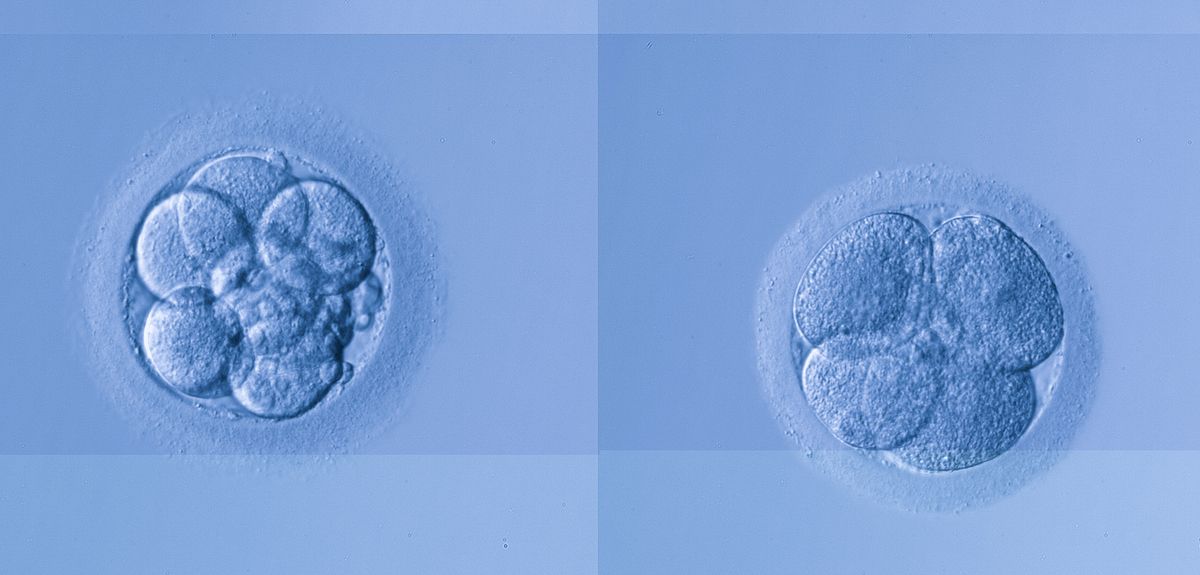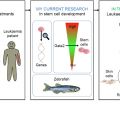
Image credit: 895Studio/ Shutterstock
3 Minute Thesis: Embryos and Lasers
Think of 'an academic' and your stereotype may well include a tendency to wordiness. In truth, while some may live up to that image, academic presentation is usually about distilling information rather than padding it.
Even so, summing up your entire doctorate in three minutes is a challenge. That's about 400 - 500 words, compared to the 80,000 word limit for a doctoral thesis (this blog intro is 185 - or something over a minute). Yet, that's the challenge of the 3 Minute Thesis (3MT), a competition originally developed by The University of Queensland. It aims to cultivate students' academic, presentation, and research communication skills. The competition supports their capacity to effectively explain their research in three minutes, in a language appropriate to a non-specialist audience.
Recently, seven doctoral students from across the University of Oxford competed in the University's 3MT final. Both the winner and runner-up were from Oxford's Medical Sciences Division: Lien Davidson and Tomasz Dobrzycki.
Below, you'll find the 3 Minute Thesis of Lien Davidson, a DPhil candidate in the Institute of Reproductive Sciences, part of the Nuffield Department of Obstetrics and Gynaecology. We'll publish Tomasz's 3MT later this week.
Lien Davidson: Embryos and Lasers
Some of you may have heard of the name Louise Brown, she was the first test tube baby, or in vitro fertilisation baby, and she was born right here in the UK. What some of you might not know is that in vitro fertilisation, or IVF, isn't only for couples who are infertile.
Embryo biopsy has been performed all over the world and healthy babies have been born, but how safe is this technique really at the time the hole is being drilled? There's no standardisation or detailed safety investigations of how the hole should be created, and every clinic does it differently.
Lien Davidson, Institute of Reproductive Sciences
But why would a fertile couple want to go through the complicated and expensive procedure of IVF? Well the answer to that question is: hereditary genetic disease. A couple with a genetic disease is able to use IVF to produce genetically healthy children.
This is done through a process called 'Embryo biopsy'. You take a sperm from the man, an egg from the woman, and you fertilise them together in the lab to create an embryo. This embryo divides into 2 cells, 4 cells, 8 cells, and so on, and at this early stage every single cell in the embryo is perfectly identical. What we know as scientists is that at this early stage, you can remove one of these cells from the embryo and the rest will continue to grow on healthily. And with this one cell you can test the entire genome of that whole embryo. That way, you can choose an embryo that's free of the genetic disease, and place that one back into the mother's uterus.
So, how do you get this cell out for testing? It's an extremely delicate and fragile procedure, because embryos at this stage have a protective shell around them, much like that of a chicken's egg, and this needs to be breached. Currently in clinics this can be done by drilling a small hole using a laser pulse, and that's where my research comes in, I research the safety of these lasers on embryos.
Embryo biopsy has been performed all over the world and healthy babies have been born, but how safe is this technique really at the time the hole is being drilled? There's no standardisation or detailed safety investigations of how the hole should be created, and every clinic does it differently.
So to investigate the safety of these lasers on embryos I use a mouse model, which looks and grows the same way as a human embryo in these early days. I'm testing different holes sizes, laser powers, and hole locations in the shell to see if there are any damaging effects that we might not know about yet. Results so far at the halfway point of my thesis have found there are certain laser treatments which appear safe for use in the embryos, and others which appear damaging in terms of the quality of the DNA and the embryo's metabolism. I’m currently looking to see if there are any minor changes in important developmental genes which could be having negative effects.
My goal for the future is to find safe laser parameters for standardisation in the clinic, and to highlight other damaging parameters that should be avoided altogether. Given that these procedures are used to literally create healthy life, the safety of each step is of the utmost importance, and with the continuation of studies such as these, we can have the peace of mind of knowing that these techniques are not damaging the precious lives that are being created.
 3 Minute Thesis: Leukaemia research
3 Minute Thesis: Leukaemia research